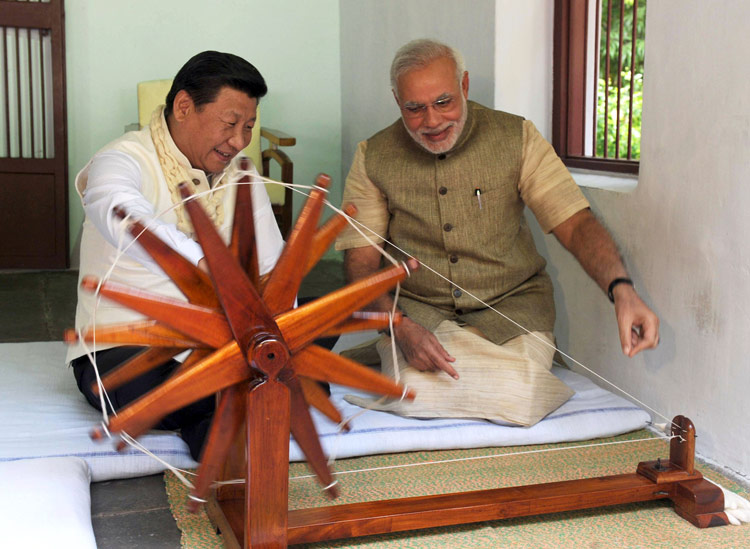Guest Column | Facing the Dragon
 Brig. Arun Sahgal (retd)
Brig. Arun Sahgal (retd)
There are multiple interpretations of Prime Minister Narendra Modi’s recent visit to China. Fundamentally, while there has been significant movement on the economic side in terms of trade, investment and opening of markets, there has been little progress on major irritants such as boundary or water issues. There remains an unmistakable shadow of lack of mutual trust and unwillingness on the part of the Chinese to significantly address these irritants. In fact, during the visit an attempt was made to vitiate the atmosphere by showing an Indian map exclusive of Kashmir and Arunachal Pradesh.
The vast gulf in perceptions forced the Indian Prime Minister to highlight these differences twice during the visit. Once during the joint statement, which specifically states early settlement of the boundary question serves the basic interests of both countries and should be pursued as a strategic objective by the two governments. Later, this was followed up during his address at Tsinghua University, where he stressed the need for clarification of the Line of Actual Control (LAC) as means to maintaining peace and tranquillity on the borders. He emphasised that the non-resolution of outstanding issues leads to hesitation, doubts and even distrust in our bilateral relationship.
From the Prime Minister’s candour two quick inferences can be drawn. One, the Chinese were obviously not very forthcoming for early resolution of the boundary dispute, harping on standard narrative of historical legacy. We had an inkling of this during Track II Dialogue with Chinese counterparts in late January 2015. The overriding Chinese position was that political determination for boundary resolution with India had not yet been made, the outcome of the visit highlights that the period of sizing up new Indian government continues.

What is, however, more significant is the fact that an Indian PM standing on a podium in Beijing was telling his Chinese counterparts that the ‘historical narrative’ has outlived its utility and lost its shine. If the two countries have to have normal relations, the boundary issue can no longer be put on the backburner. From the editorials in Global Times and Xinhua, it appears that message has gone home, with Global Times editorially praising Modi’s strategic insights and pragmatism; which could be a game-changer like that of Richard Nixon’s 1972 visit to China.
There is yet another context to PM Modi’s assertions for early resolution of boundary disputes. He was holding a mirror to the Chinese leadership that attempts at creating a China-centric Asian century will be in jeopardy if it persisted with assertive behaviour and put-off boundary resolutions (both continental and maritime) on specious grounds. He was, in a way, reassuring strategic partners in Asia of the emergence of India as a benign regional balancer whom they could look up to.
CBMs in Context
As brought out by the Indian Prime Minister in Beijing, the existing border disputes between the two countries is a major impediment not only to bilateral relations, but for broader peace and security in Asia. Confidence Building Measures (CBMs) between the two countries are essential for reducing tensions, preventing escalations of hostilities, maintaining peace and tranquillity along the disputed border, and building mutual trust and confidence.
CBMs can be broadly defined as ‘measures that address, prevent, or resolve uncertainties among states. They are particularly pertinent in addressing and working towards the resolution of long-term political stalemates.’ The main objective of these CBMs is to provide a framework within which border security confidence can lead to the eventual settlement of the boundary issue. It calls for reduction of troops deployed along the border region and military disclosure when either of the parties is undertaking major military exercises.
India has two major outstanding border disputes: one with Pakistan and the other with China. The Line of Control (LC) with Pakistan is clearly defined but despite this, there are regular instances of firing at the border and incidences of cross border infiltration leading to casualties and turbulence.
On the other hand, the LAC, which is un-demarcated, marks the disputed boundary between India and China; which has witnessed reasonable peace and tranquillity with no major instances of firing or skirmishes since the Sumdorong Chu valle
Subscribe To Force
Fuel Fearless Journalism with Your Yearly Subscription
SUBSCRIBE NOW
We don’t tell you how to do your job…
But we put the environment in which you do your job in perspective, so that when you step out you do so with the complete picture.








